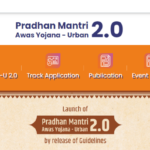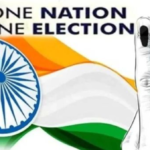SC/ST Sub-Classifications- Justice or Further Division?
The Supreme Court has ruled that sub-classification within the Scheduled Castes (SC) and Scheduled Tribes (ST) is permissible. The 7-judge bench, with a 6:1 majority, stated that these reserved category groups can be subdivided legally. Justice Pankaj Mithal emphasized that reservation benefits should ideally be limited to the first generation of beneficiaries, with periodic reviews to ensure that subsequent generations have achieved parity with the general category.
Key Points of the Ruling:
- Sub-Classification Permitted: The court held that the SC/ST categories are not homogeneous and can be subdivided to ensure a more equitable distribution of reservation benefits.
- Historical Evidence: Chief Justice DY Chandrachud highlighted historical evidence showing that the SCs are a heterogeneous group, not a single uniform class. This supports the need for sub-classification to address varying levels of disadvantage within the group.
- Overruling EV Chinnaiah: The ruling overruled the 2005 EV Chinnaiah case, where it was decided that all castes in the Presidential Order under Article 341(1) formed a homogeneous group that could not be subdivided.
- Empirical Data Requirement: Sub-classification must be supported by quantifiable data to ensure it is justified and effective.
Top Quotes from the Justices:
Justice Pankaj Mithal:
- “Reservation should be meant for only the first generation among a category. If the second generation has come up, then reservation benefits should not be given, and the state should see if the second generation has come shoulder to shoulder with the general category.”
Chief Justice DY Chandrachud:
- “The members of SC/ST are not often able to climb up the ladder due to systemic discrimination—article 14 permits sub-classification of caste. Historical evidence shows that depressed classes were not homogeneous. Nothing in Articles 15, 16, and 341 prevents sub-classification for SCs if there is a rational distinction and nexus for the object sought to be achieved.”
Justice Gavai:
- “Hardships and backwardness suffered by some of the scheduled castes differ by each caste. EV Chinnaiah was wrongly decided. Real equality can only be achieved through social justice and empirical data.”
Justice Bela Trivedi (Dissenting):
- “I respectfully disagree with the majority judgment. The three-judge bench referred to it as a larger bench without assigning reasons. Under the guise of providing reservation, states cannot tinker with the presidential list, which would be an impermissible colorable exercise of power.”
Justice SC Sharma:
- “Identifying the creamy layer among SC/ST must become a constitutional imperative.”
Implications:
- The ruling allows the Centre and States to earmark the most backward classes within the SC/ST categories.
- The decision mandates using empirical data to support sub-classification, ensuring that reservations benefit those most in need.
- The Supreme Court’s judgment acknowledges the diverse levels of disadvantage within SC/ST groups and seeks to address them more effectively through sub-classification.











